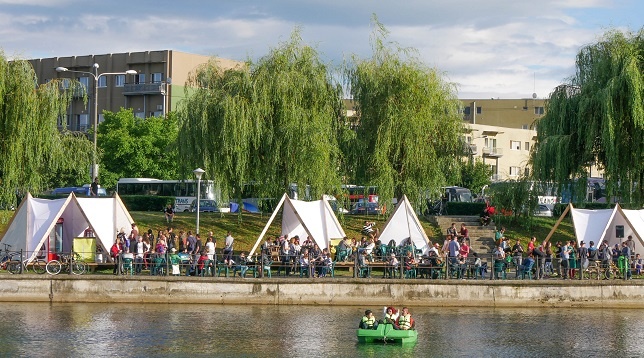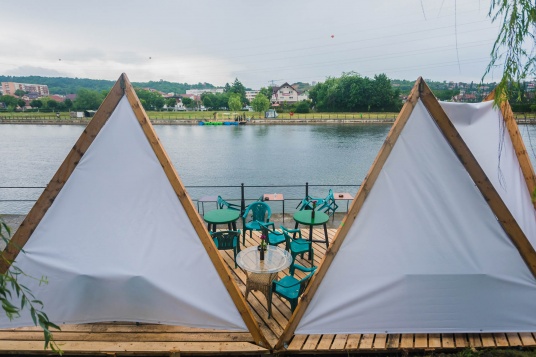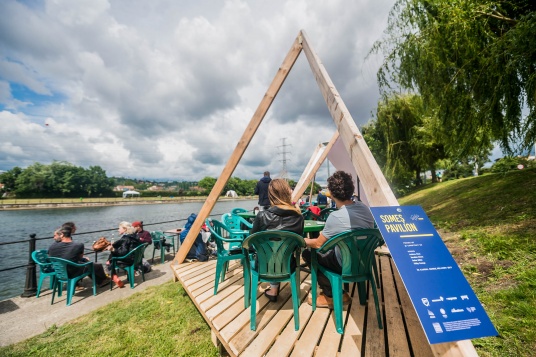HISTORY
KOOHO is a group of five young architects currently based in Cluj-Napoca, focusing on temporary architecture and experimental projects. They design and then bring to life their ideas with their own hands as often as they can, sometimes with the help of friends or volunteers.
Founders: Ambrus Ákos, Barabás Dénes, Bokor Milán, Bölöni Botond, Fülöp Csenge
SPECIFIC
This creative process results in a personal connection between creator and creation, thus providing a friendly and sensible atmosphere.
ROMANIAN DESIGN WEEK APPEARANCES
2018 // Someș Pavilion
Someș Pavilion was designed and constructed in Cluj-Napoca by KOOHO for the event called Someș Delivery, with the purpose of being the event’s central pavilion. It hosted various programs like concerts, activities for children, a coffee bar, a bookstore, public discussions, or simply they provided shade, a cold drink or a place to rest for passers-by. The modular structure was placed along an axis, due to the narrow space near the riverside promenade, and the modules themselves were regular tetrahedrons with wooden floor.
To equip them for rainy weather, or too much sun, some of the strategically chosen sides of these tetrahedrons were covered in white waterproof poliplan material or semi-transparent white mesh for shade. Because the pavilion stayed in its location for a few months after the event, it managed to attract people to this less-used section of the riverside, thus activating it and creating a sense of ownership in the community towards this public space.
KOOHO is a group of five young architects currently based in Cluj-Napoca, focusing on temporary architecture and experimental projects. They design and then bring to life their ideas with their own hands as often as they can, sometimes with the help of friends or volunteers.
Founders: Ambrus Ákos, Barabás Dénes, Bokor Milán, Bölöni Botond, Fülöp Csenge
SPECIFIC
This creative process results in a personal connection between creator and creation, thus providing a friendly and sensible atmosphere.
ROMANIAN DESIGN WEEK APPEARANCES
2018 // Someș Pavilion
Someș Pavilion was designed and constructed in Cluj-Napoca by KOOHO for the event called Someș Delivery, with the purpose of being the event’s central pavilion. It hosted various programs like concerts, activities for children, a coffee bar, a bookstore, public discussions, or simply they provided shade, a cold drink or a place to rest for passers-by. The modular structure was placed along an axis, due to the narrow space near the riverside promenade, and the modules themselves were regular tetrahedrons with wooden floor.
To equip them for rainy weather, or too much sun, some of the strategically chosen sides of these tetrahedrons were covered in white waterproof poliplan material or semi-transparent white mesh for shade. Because the pavilion stayed in its location for a few months after the event, it managed to attract people to this less-used section of the riverside, thus activating it and creating a sense of ownership in the community towards this public space.
























